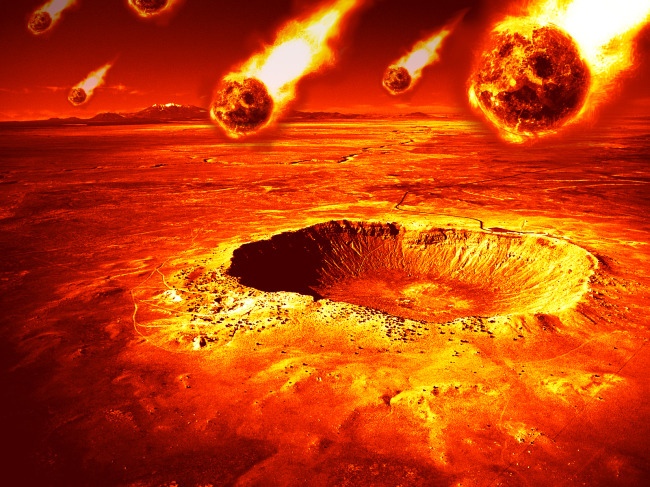While Gene Shoemaker was trying to get people galvanized about the potential dangers of the inner solar system, another development—wholly unrelated on the face of it, was quietly unfolding in Italy with the work of a young geologist from the Lamont Doherty Laboratory at Columbia University.
正當尤金·蘇梅克試圖提醒人們注意太陽系內部的潛在危險的時候,由于哥倫比亞大學萊蒙特·多赫蒂實驗室的一位年輕地質學家的工作,另一件大事──表面看來完全沒有關系──在意大利悄悄揭開序幕。
In the early 1970s, Walter Alvarez was doing fieldwork in a comely defile known as the Bottaccione Gorge, near the Umbrian hill town of Gubbio, when he grew curious about a thin band of reddish clay that divided two ancient layers of limestone—one from the Cretaceous period, the other from the Tertiary. This is a point known to geology as the KT boundary,
20世紀70年代初,在距離翁布里亞地區的山城古比奧不遠的地方,沃爾特·阿爾瓦雷斯正在一個名叫博塔西昂峽谷的峽道里作實地考察。他突然對薄薄的一層淡紅色黏土發生了興趣。這層黏土把古代灰巖分為兩層,一層屬于白堊紀,一層屬于第三紀。這在地質學里被稱之為KT界線。

It is KT rather than CT because C had already been appropriated for Cambrian. Depending on which source you credit, the K comes either from the Greek Kreta or German Kreide. Both conveniently mean "chalk," which is also what Cretaceous means.
是KT界線,而不是CT界線,因為C已經用來代表“寒武紀”。K不是來自希臘語Kreta,就是來自德語Kreide。二者的意思都是白堊,這也是“白堊紀”的意思。
and it marks the time, sixty-five million years ago,when the dinosaurs and roughly half the world's other species of animals abruptly vanish from the fossil record. Alvarez wondered what it was about a thin lamina of clay, barely a quarter of an inch thick,that could account for such a dramatic moment in Earth's history.
它標志著6500萬年前恐龍和世界上大約一半其他種類的動物從化石記錄中突然消失。阿爾瓦雷斯不大明白,只有6毫米左右厚的薄薄一層黏土,怎么能說明地球史上這么個戲劇性的時刻。
At the time the conventional wisdom about the dinosaur extinction was the same as it had been in Charles Lyell's day a century earlier—namely that the dinosaurs had died out over millions of years.
當時,關于恐龍滅絕的時間,人們通常的看法與一個世紀前查爾斯·萊爾時代一樣──即恐龍滅絕于幾百萬年以前。












